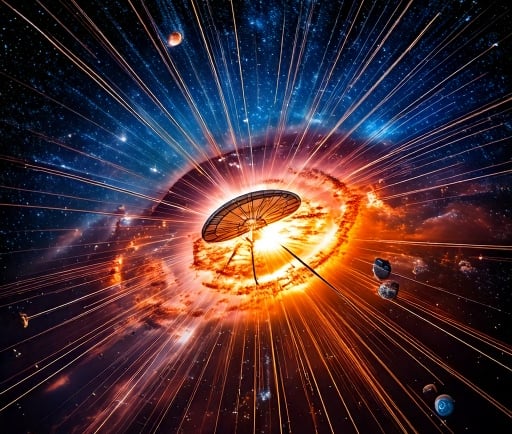FRB 180916: The Mystery of Periodic Fast Radio Bursts


Introduction to Fast Radio Bursts
Fast Radio Bursts (FRBs) are astrophysical phenomena that have fascinated scientists since their discovery. These millisecond-long flashes of radio wave energy appear to originate from distant galaxies, often displaying intriguing patterns and periodicity. One of the most notable examples of this phenomenon is FRB 180916, a burst that repeats every 16.35 days, providing valuable insights into the nature of these mysterious signals.
Characteristics of FRB 180916
FRB 180916 stands out not just for its periodicity but also for the dimensions of its source. Each burst lasts only a fraction of a second, yet emits an immense amount of energy, equivalent to that of the sun over several years. This specific FRB was first detected by the Canadian Hydrogen Intensity Mapping Experiment (CHIME) in 2019, and its regular recurrence has sparked interest across the scientific community. Due to its repeating nature, FRB 180916 challenges previous assumptions about the behavior and origin of such bursts. Researchers speculate that the bursts may be linked to magnetars, which are highly magnetized neutron stars capable of producing intense magnetic fields and radiation.
Potential Origins and Theoretical Insights
The precise origin of FRB 180916 remains a subject of intense debate. While some scientists have proposed that these bursts could originate from cataclysmic astrophysical events, the periodic nature of FRB 180916 suggests a more stable source, likely a celestial body with consistent properties. Among the leading candidates are magnetars, which may emit periodic bursts of energy as a result of their extreme magnetic environments. This association stems from observational data indicating that magnetars can produce similar short-lived radio emissions.
Furthermore, the periodic characteristics of FRB 180916 provide a unique opportunity for scientists to study the phenomena in greater detail. By improving our understanding of periodic FRBs, researchers can develop better models to describe their mechanisms and the environments from which they arise. This could lead to profound insights into the structure and evolution of galaxies, as well as the fundamental physics governing exotic states of matter found in neutron stars.
Conclusion: The Impact of FRB Research
The study of Fast Radio Bursts like FRB 180916 is reshaping our understanding of the universe. Each discovery offers a glimpse into the life cycles of stars and the dynamic processes that govern their behaviors. As observations and technologies improve, the secrets held by these fleeting flashes of energy may soon be unveiled, illuminating the cosmos in ways we have yet to imagine. The continuous research into FRBs not only expands our knowledge of astrophysics but also captivates the imagination of scientists and enthusiasts alike.
